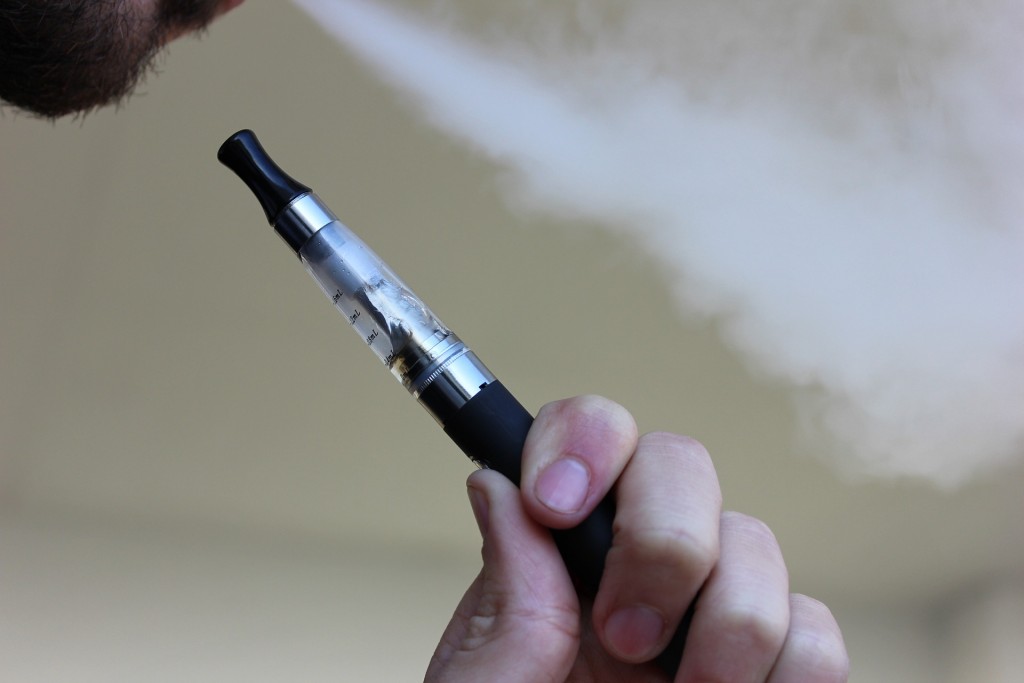This article was originally published on drugwise.org.uk.
You would think that a product with the potential to save a billion tobacco-related deaths this century without costing tax-payers a penny would be universally welcomed by governments and the global public health community. You’d be wrong. Startling revelations from this years’ Global Nicotine Forum Conference in Warsaw.
Having spent over 35 years working in the field of illegal drugs, this was my first foray into the world of tobacco or more specifically the current worldwide controversy over e-cigarettes known technically as Electronic Nicotine Delivery Systems (ENDS). What I learnt from my two days at the conference was both fascinating and appalling.
Big Tobacco
For all of the last century, the story of tobacco was a simple tale of good and evil. On the dark side was what became known collectively as Big Tobacco. And on the side of the angels was everybody else; tobacco control officials, public health professionals, doctors from a multitude of disciplines and the many health charities with an interest in the extermination of the devils and all their works. Having focussed their attention on communicable diseases, the World Health Organisation (WHO) turned its attention to non-communicable diseases derived from lifestyle choices such as smoking. To tackle malaria, you have to deal with the vector, the mosquito. So the thinking was that to deal with smoking, you had to take on the tobacco companies and so from the late 1990s, the organisation became determined to put the vector out of business.
This made perfect sense. Having invented the most efficient mechanism for delivering nicotine ever devised – the cigarette – the companies made a fortune marketing a product that still kills 50% of their customers even if used as intended. They grew their business by withholding data that demonstrated the damage caused by cigarettes, lying to the public, conning the scientific community with bogus research papers and engaging in the global bribery and corruption of government and public health officials. Even this year, Big Tobacco stands accused of withholding internal marketing information that would undermine its own objections to plain packaging.
Game Changer
But in 2004, a Chinese research chemist named Hon Lik dramatically muddied the waters. As a scientist, he knew that the real damage of cigarette smoking was caused not by nicotine, but by burning tobacco which releases a barrage of toxins. Yet he was a committed smoker who had tried and failed many times to give up. Combining his knowledge of chemistry with an enthusiasm for electronic devices, he invented a way of enjoying the stimulant properties of nicotine without any of the disadvantages of combustion. He inhaled not smoke, but vapour. He called it an e-cigarette.
What started as a bottom-up community of micro-manufacturers and early adopter vapers (as distinct from smokers) by around 2007 began to attract the interest of Big Tobacco who embarked on a programme of developing their own products and taking over some of the original starts-up. This disruptive technology sparked a global nicotine war.
Smokestack lightnin’
The e-cigarette introduced the concept of tobacco harm reduction (which includes other non-combustible tobacco products such as snus of which more later) – a concept as controversial for many governments, health professionals and campaigners as drug harm reduction. Even if smokers are no longer inhaling demonstrably harmful substances, they are still using nicotine which is addictive. But other than its addictive properties (which incidentally appear reduced when separated out from other chemicals resident in the smoke) nicotine is a relatively benign drug. After all, it is a key constituent of Nicotine Replacement Therapy (NRT) devices such as patches and gum. Trouble is that NRT has a 90% plus failure rate because the drug is being delivered very slowly to the brain (orally or through the skin) and from the users’ point of view lacks the pleasure of inhaling.
However, the fact that people want to continue enjoying nicotine and may be substituting e-cigarettes for ordinary cigarettes rather than using them as a stepping stone to quitting is a red rag to those in tobacco control. They don’t ‘get’ the pleasure principle when applied to nicotine. So their antipathy does smack of a moral rather than a health agenda and while the tobacco harm reduction mantra is “smoke for the nicotine, die from the tar” those in tobacco control who take an anti-nicotine view including the WHO responsible for the global health of the planet are giving smokers two options – quit or die.
The other red line is the involvement of Big Tobacco in the development of the new products. But here is one glaring paradox. The WHO established the Framework Convention on Tobacco Control (FCTC) whose member countries meet at the Conference on Parties to the FCTC, known as COP meetings. The COP (akin to the Commission on Narcotic Drugs) is criticised by some GFN delegates as ‘paranoid’, about any links with Big Tobacco. Yet sitting round the COP table is the Chinese delegation whose government runs the state owned tobacco industry – one of the largest tobacco manufacturers in the world.
Meeting of minds
Until 2014, those advocating for tobacco harm reduction had no forum for the exchange of information and ideas. Enter Professor Gerry Stimson, a UK social science drugs researcher who conducted the pioneering UK research into the benefit of harm reduction interventions to reduce the impact of HIV/AIDS among injecting drug users and established the International Harm Reduction Association. Seeing similar issues arising from the world of tobacco, Professor Stimson and drug harm reduction conference organiser Paddy Costall, set up the GNF to allow for all interests to meet including Big Tobacco. They were represented at the conference along with clinicians, academic researcher, legal experts, policy analysts, vaping manufacturers and consumer advocates, although the conference is clear that despite the presence of commercial interests, the only funding it receives comes from registration fees.
Endorsing ENDS
The public health benefit of e-cigarettes was endorsed by two recent UK reports, one from the Public Health England which declared that the product was “95% safer than cigarettes” and the other from the Royal College of Physicians who concluded that “On the basis of available evidence, the RCP believes that e-cigarettes could lead to significant falls in the prevalence of smoking in the UK, prevent many deaths and episodes of serious illness, and help to reduce the social inequalities in health that tobacco smoking currently exacerbates”. The UK was cited at the GFN conference as a beacon of sanity and reason in what has become a hard line approach from a range of tobacco control interests promoting the message to the general public and other health professionals that e-cigarettes are as dangerous as ordinary cigarettes.
Vaping risks
So what are the risks of vaping? There have been the occasional stories about devices exploding (and the need for industry standards was agreed at the conference) but the focus of research has been around the substances that produce the vapour and the many different flavours that vapers can choose. A BBC science documentary shown earlier this year addressed these issues among others.
Even the air we breathe will cause tears in our blood vessels. The issue is how quickly those tears repair. The programme found that the ability of cells to repair are similar when exposed to fresh air or the vapour from e-cigs whereas cigarette smoke significantly impedes cell repair. Are fears about ‘passive vaping’ justified? It is true that some vapers indulge in what is known as cloud chasing, blowing out huge clouds of vapour which can be irritating to those in close proximity and the nicotine in the vapour can cause headaches. But how dangerous is it?
Mark Travers is a scientist from the Roswell Park Cancer Institute whose tobacco research has been instrumental in seeing public smoking banned. He conducted research for the programme which revealed that e-cig vapour contained no carbon monoxide and 99% fewer toxins than cigarettes. That said, he could not say conclusively that there were no ill effects from inhaling vapour. And what about the flavourings? A test was run comparing cell death from cigarettes and two flavourings – menthol and pina colada. The survival rate of cells was 6%, 25% and 53% respectively. So again not a clean bill of health, but nobody has claimed 100% safety from non-combustible products, only that the risks to smokers are dramatically reduced if they switch.
The ‘get out of jail free’ response from researchers and clinicians is that ‘we don’t know the long term effects of vaping’. But even if it was concluded in twenty years time that vaping was only 60% safer than cigarettes instead of 95%, the public health benefit would still be considerable. And how would any medicines come to market on the basis of first analysing long term effects?

(Source: Flickr – Jeff Djevdet)
Smoke and mirrors
Even so, some researchers appear to be determined to paint these new products in the worst possible light right now, condemned by Clive Bates former director of the UK charity Action on Smoking and Health and also by Dr Konstantinos Farsalinos, a Greek cardiologist as ‘junk science’. One of the more notorious examples appeared in the New England Journal of Medicine in January 2015.
Propylene Glycol and Glycerol are used in ENDS to bulk out the flavours and create the vapour. One chemical created by the heating of propylene glycerol is formaldehyde which at sufficient levels is possibly carcinogenic. In order to show that e-cigarettes emit high levels of formaldehyde, the researchers ignited an e-cigarette to a temperature that no vaper could possibly tolerate. For Clive Bates, “it was like toasting some bread until it was absolutely black and inedible and then using this to make conclusions about the safety of toast”. In fact, low levels of formaldehyde are ubiquitous in the air we breathe and according to Dr Farsalinos, the amount you inhale from an e-cigarette is no more than you would sitting at home watching the TV. Apparently though, neither the authors nor the journal would admit any mistakes and refused to retract the paper.
What about accusations that vaping is a gateway to cigarette smoking and will renormalise smoking especially for young people? Again the research evidence does not stand up. E-cigarette use has been rising in the USA, at the same time as cigarette smoking has been coming down, so there is no evidence that vaping is a gateway to smoking while the numbers of non-smokers who have taken up vaping remains statistically insignificant.
Legal response
The response of legislators around the world has been no less hostile, although from data supplied by the ECigIntelligence, the regulatory and market intelligence service for the ENDS industry, the picture is patchy. Globally, there is hardly any market for vaping in the whole of south America, Africa, most of Middle and Far East. Yet E-cigarettes are banned outright in Australia, Canada, Singapore and most of the countries of the Arabian Peninsula with India and Malaysia looking to control aggressively.
The legislative developments likely to have the biggest impact of the future of ENDS and so of most concern to the conference delegates are in those regions with currently the highest number of vapers – the USA, the UK, France and Poland. The relevant legal instruments are the European Tobacco Products Directive (TPD) and the Federal Drug Administration (FDA) Deeming Regulations both of which have been enacted this year.
Three widely divergent views on how ENDS should be controlled have been expressed. There were those who wanted all products licensed as medicines. This was opposed by the industry who could see major obstacles to bringing product to market under a medical regime. The other push was for ENDS to be brought under tobacco control thus underlining a view that there was no difference between ENDS and cigarettes. And the view of the industry and the vaping community veered towards regarding ENDS as consumer products subject to regulations of safety and so on that attach themselves to all consumer products. The tobacco control lobby has pretty much won the argument. The story of snus in Europe is illuminating.
Snus, a form of powdered tobacco which is held under the top lip, originated in Sweden back in the 18th century. According to the WHO, the use of snus has resulted in fewer snustobacco-related deaths among Swedish men than anywhere else in Europe. But snus has been banned in all European countries except Sweden as long ago as 1992 driven by fears of an aggressive marketing campaign by Big Tobacco to introduce smokeless tobacco products like Skol Bandits into Europe aimed at young people. Yet despite the growing evidence in favour of smokeless tobacco products and some legal challenges by the manufacturer Swedish Match, the ban remains under the new European TPD.
Critics of the TPD assert that by banning all advertising, putting several limitations on the content and design of e-cigarettes, insisting on excessive warnings with nothing about relative risk and adding layers of unnecessary bureaucracy, the net result will be to limit the appeal of ENDS in favour of the continued use of cigarettes. The UK decision to leave the EU will remove UK influence from future discussions, but overall there probably wont be much impact on the enactment of the TPD. The critical view however is that as unhelpful the TPD might be, it isn’t as bad as the new FDA Deeming Regulations.
The power of Big Tobacco in the USA ensured that there was no federal control of tobacco products until 2009. But the new Tobacco Control Act did not cover e-cigarettes, so in 2014, the FDA ‘deemed’ them to be tobacco products to bring them under the Act. Significantly any product on sale before 2007 does not have to conform to the new regulations – so a green flag for cigarettes at a time when there were virtually no ENDS on sale. The regulations are complicated, but just one example of why they could kill off all independent businesses and leave the industry in the hands of Big Tobacco. Snus was not banned in the USA, but according to the Swedish Match representative at the GFN Conference, when the company wanted to introduce a modified risk product they had to submit a research evidence report which ran to 140,000 pages. END of story.
Enter Big Pharma
The vehemence of the anti-ENDS lobby which covers a spectrum of activity from hugely misleading public health campaigns and the publication of suspect research to draconian legislation right through to highly abusive verbal attacks on individuals does make you wonder what else might be going on here.
The start of the GFN conference saw the European premiere of a documentary A Billion Lives which is the WHO estimate of tobacco-related deaths by 2100. The film charts some of the dark deeds of Big Tobacco before setting out the clinical case for ENDS and one engaging interview with David Goerlitz who was literally the face of Winston cigarettes, now a strident anti-cigarette campaigner.
But perhaps the most intriguing section of the film concerned the role of Big Pharma in the support of anti-ENDS activity. Of course, there is a risk of being sucked into a world of conspiracy theory, but it is self-evident that the very last thing a manufacturer of NRT products would want to see is their highly profitable market being eroded by smokers who want to quit turning instead to ENDS. The film showed a number of US health charities and medical organisations who have been very vocal in their opposition to ENDS as also being funded by Big Pharma. Here are a couple of examples from the film.
The Campaign for Tobacco Free Kids is one of the biggest voices against vaping. They were created by the Robert Woods Johnson Foundation started by the founder of Johnson & Johnson (makers of Nicorette products and others). They have also been one of the biggest shareholders of J&J and have quite a few board connections. The American Cancer Society took endorsement money from Glaxo Smith Kline to put their logo on all the Nicoderm CQ products.
But it doesn’t just stop with examples from this film. It was reported in The Times in 2014 that European legislators drafting the TPD been lobbied by Glaxo Smith Kline to enact stringent anti-ENDS legislation on the grounds that e-cigarettes are a gateway to smoking. The same point was made publicly in a UK House of Lords debate. If you line everything up, it almost feels like a proxy war between Big Tobacco and Big Pharma.
So how to conclude? Listening to what the conference speakers had to say including those from the vaping community itself, it does seem shocking that having failed so monumentally to curb cigarette-related disease and mortality, so much of the global health community and many governments have set their faces against these new technologies when the immediate health benefits seem so obvious. But this has been a consumer-led movement which could deliver the biggest public health benefit of our age without any cost to the tax payer – something neither governments nor the world’s leading health bodies can take any credit for. And that perhaps, Professor Stimson muses, may be part of the problem.
Harry Shapiro is the Director of DrugWise, former Director of Communications for DrugScope and former Editor of Druglink. He is also a journalist and music writer.



